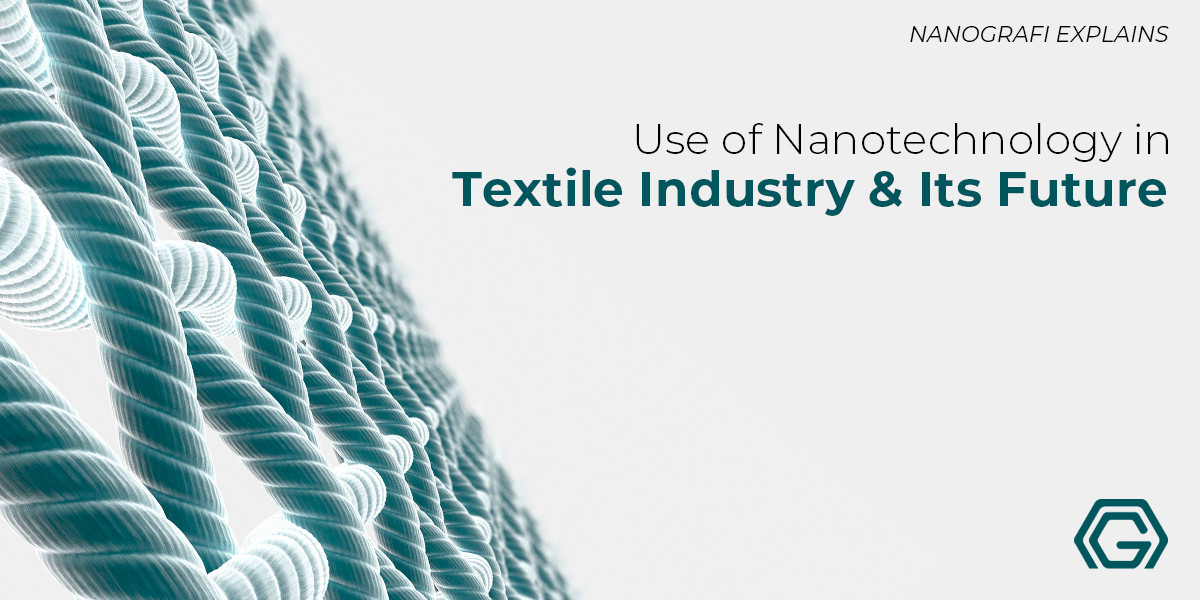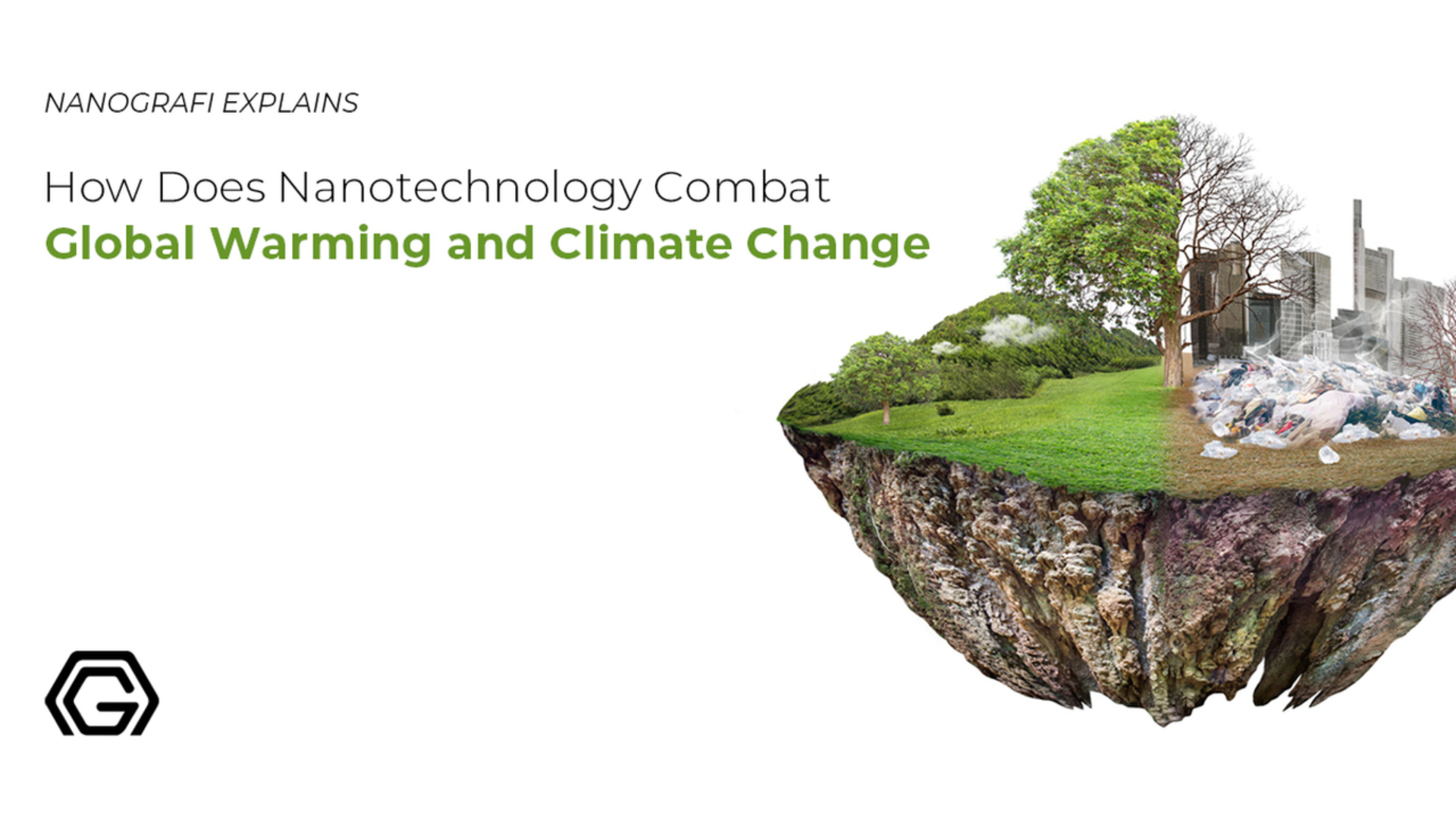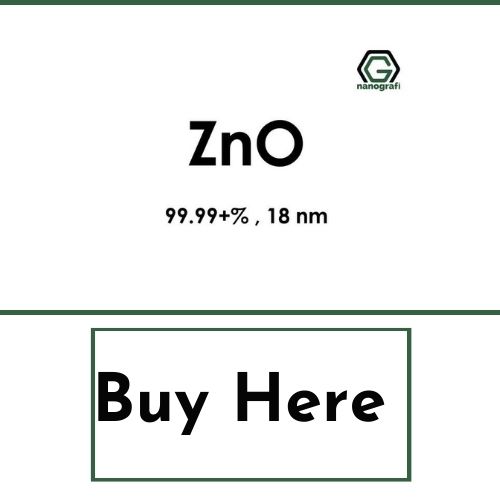Use of Nanotechnology in Textile Industry and Its future
Nanotechnology (NT) deals with materials of the length of 1-100 nm. At the molecular level, nanotechnology can be utilized for developing the desired textile features, like antimicrobial characteristics, fire retardancy, water repellency, durability, soft hand, remarkable surface structure, high tensile strength, and the like.
Nanotechnology in the textile industry can be explained as the matter's control, manipulation, and understanding at the length that's stated above, such that the material's biological, chemical, and physical characteristics (bulk matter, molecules, and individual atoms) can be altered, synthesized and engineered for development of the enhanced systems, structures, devices, and materials of the next generation. Advances in nanotechnology for the textile industry have paved the way for significant and several challenges and opportunities for the textile industry, all of which are explained in this article in detail. This paper's main focus is on summarizing nanotechnology's recent applications as they relate to textile fibers, fabrics, and yarns.
Introduction
A huge potential was seen by the nano textile materials in recent days for being utilized for various advanced applications. Nanoscience is a study of the structure, particle, and material on the scale of a nanometer i.e 10-9 (one-millionth of a millimeter). Nanotechnology is the utilization of nanoparticles and nanomaterials in advanced products for applying nanoscience. Textiles is one of nano technology's most extensive applications. Many advanced finishes and materials can be produced by utilizing nanotechnology in textile at nano sensation level that can be utilized for high-end applications like filtration upto nanoscale, breathable sportswear, and protective textiles for chemical and medical professionals.
Many beneficial features are seen by the nanofibers, making them important in numerous applications as it’s stated above. Today, nano-scale materials are being made by the most versatile technology, known as electrospinning. It is also utilized to engineer the nano-scale materials on the textile substrate. The nanomaterial made through this technology is extremely porous and possesses a larger surface area, making it appropriate for advanced applications. A superior product for specific applications can be produced by utilizing some special compatible additives during electrospinning.
Textile products are now discovering applications in various technical and advanced application areas. However, nanotechnology and Nanoscience have displayed their effective usage to produce some textile materials up to the nanometer scale, displaying the highly porous fibers and high surface area which exhibits the suitability for the advanced applications. Most textile products made on a nanometer scale, are either in the form of nanomembranes or nanofibres. It is the remarkable properties that are possessed by these materials that offer unusual electrical, magnetic, optical, biological, thermal, and mechanical characteristics due to their specially developed structures and nanoscopic dimensions.
Various techniques can synthesize the nanofibers, including centrifugal spinning, electrospinning, melt blowing, drawing, template synthesis, phase separation, and biocomponent extrusion. There is a potential of the nanofibers for being used successfully to make protective clothing for military, chemical, and medical professionals, tissue engineering, thermal resistant products, biomedical products, filtration upto nanometer scale, and breathable sportswear. Reinforcement of the nanofiber sand nanoparticles additives into the textiles and utilization of the Nanotechnology can successfully manufacture these advanced applicative textiles.
Nano-Materials' Need
Some limitations are associated with the conventional textile processes, making it capable of producing filaments of only a microdenier level. If a fabric is produced from these filaments, it won’t find a pore size on the nanometer scale. This material's number of layers should increase if we want to get the pore size to be smaller as it increases its mass and thickness per unit area, and this is why it turns out to be tougher in using in particular advanced applications.
For instance, in an artificial kidney's case, waste material should be allowed by the membrane to get passed through but there should be no permission for the useful proteins or the blood particles to get passed. Moreover, no toxic gas or bacteria should be allowed by the mass membrane to get passed through. A nano-membrane is - a breathable material that shows impermeability towards any liquid or water and permanently towards gases or water vapor.
One can use nanotechnology to engineer the advanced effect on the ordinary textile products like durability, softness, and breathability are one of the extensive characterizations of the nanofibers, and in developing advanced properties that are, antimicrobial resistance, fire retardancy, water repellency, and various advanced applications in the industry of medicine. This feature aids in using them in making the medical professional's protective clothing, which offers protection from any infectious fluids along with the desired level of comfort. Nanocoating can also be used to do some repellent finishes which allows the repulsion of blood and prevention of the blood from getting penetrated or accumulated through the medical professionals' protective clothing. Thus the nanomaterial is needed as it can complete all the above-mentioned requirements that can't be met by a conventional textile material.
Methods of Manufacturing the Nano-Fiber
Nanofibers can be made through several techniques, including, centrifugal spinning, electrospinning, melt blowing, drawing, template synthesis, phase separation, and biocomponent extrusion.
Nanotechnology in Textile
Usually seen as an industrial revolution, nanotechnology is a developing interdisciplinary technology. Nanotechnology deals with materials that have a length of 1-100 nm. Nanotechnology's fundamentals are that when its dimensions are lessened to the nanometer scale, the material's characteristics change drastically. The textile industry has discovered nanotechnology's possibilities now. It is utilized for developing the required textile properties, like antimicrobial characteristics, fire retardancy, water repellency, durability, soft hand, remarkable surface structure, high tensile strength, and such.
Currently, spacesuits and sportswear are one of the rapidly increasing segments in nanotechnology's applications. Sharkskin suit based on a plasma layer improved technology is most famous all over the world as it aids in trouble-free gliding through the water. Even in the industry of healthcare, nano-textiles are a common sight as they are in form of surgical gowns and gloves.
To get more information about nanotechnology,
you can read our blog post here.
Nanotechnology’s Modern Applications in Textile Industry
A huge amount of attention is being gained by nanotechnology as it is broadly perceived as providing a huge amount of potential in a broad variety of end usages. Nanomaterials' new and remarkable characteristics didn't only gain the interests of the researchers and scientists but also the businesses because of their large economical potential. Real commercial potential is possessed by the nanotechnology for the textile industry, mainly because of the reason that the conventional methods that are utilized for providing different characteristics to the fabrics do not often result in permanent complications, and after wearing or laundering, will lose their functions.
High surface energy and a large surface-area-to-volume ratio are possessed by the nanoparticles, making them capable of providing high durability for the fabrics, therefore providing better affinity for the fabrics and thus resulting in an increase in the function's durability. Moreover, nanoparticle coating on fabrics will not influence their hand feels or breathability.
There are three ways to explain the nanotechnology’s Applications:
- Departmental wise application
- Applications in the characteristics of the textile material.
- Application in the apparel industry
Departmental Wise Applications
Nanotechnology has already affected the textile industry. Research involving nanotechnology is flourishing for creating unprecedented functions for textile materials and enhancing the performances of textile materials. This application type includes nanotechnology in the textile finishing and nanotechnology in the making of the composite fiber.
The following topics are included in the nanotechnology in making the composite fibers:
- Nano cellular foam structures
- Carbon nanotubes
- Metal Oxide Nanoparticles
- Clay Nanoparticles
- Carbon nanoparticles and carbon nanofibers.
In the textile finishing, the nanotechnology includes:
- Self-assembled nanolayer
- Nanoparticles in fishing
- Chemical finishes upgrade and theresultant functions
Applications of Nanotechnology in the Apparel Industry
Material and clothing technologies for good protection in extreme conditions, space technology, skincare, and the sporting industry are some of the examples of the industries in which some applications are already being seen in nanotech-enhanced textiles. Using nanotechnology materials to treat textiles is a method for enhancing the textile's characteristics, making it have nicer colors, durable for long, etc. New functionalities like communications and energy storage, can also be added by using nanotechnology. There are many examples of the nano-improved textiles and some of the interesting ones that are on the market, are:
- treatment of nano socks with silver nanoparticles. The action of silver against odor and infection.
- As a response to changes in the body temperatures, Phase Change Materials (PCMs) are used by the body warmers.
- Wrinkle-resistant and stain-repellent threads woven in textiles.
Lifestyle Applications
One can surprisingly see nanotechnology's earliest commercialized applications in lifestyle applications. Nanomaterials were first used in cosmetics and textiles. Bulletproof vests are one famous example of nanotechnology materials and technologies in lifestyle applications. A material, seventeen times stronger than Kevlar is made by using nanotube fibers. Future developments include the usage of nanotechnology for creating Smart and Interactive Textiles (SMIT), capable of sensing magnetic, chemical, thermal, electrical, or other stimuli.
Sporting Goods
Nanotechnology has improved a lot of sporting goods, some of them are skin creams, golf balls, tennis racquets, and running shoes. Scientists have developed textiles for withstanding extreme environments, and the naturally existing viral nano-particles, living in some of the Earth’s harshest environments, for nanotechnology’s new building blocks. A garment interacting with the wearer and sensing its surrounding is of significant interest. A personalized healthcare system can be provided by such textile-based nanosensors, which can monitor your vital signs as you are responding to weather changes or running up a hill.
Swimming Suit
Shark-skin suit that was worn in the Olympic swimming championship and broke the world record, is the most broadly utilized application. Suit including a plasma layer improved by the nanotechnology for repelling water molecules is made for helping the swimmer glide through the water and becoming a major characteristic of the important swimming events as an attempt was made by all of the competitors to improve their winning chances.
Flexible Electronic Circuits
The basis for the chips is formed by the nanoribbons which are so flexible that they can be wrapped around the microscope cover slip's edge and so stretchable that they can be twisted into a corkscrew. Development of applications in the healthcare industry is the focus of the researchers right now as they think that one day we would be able to monitor activity in patients at epilepsy risk by using these flexible, tiny electronic sheets, or they can monitor the vital signs of the patients during surgery by being integrated into the surgical gloves.
Application in the Textile Material’s Characteristics
Nanotechnology is used in the characteristics imported to the textiles, which include self-cleaning fabrics, dye capability enhancement, flame retardation, UV and anti-static protection, anti-bacteria, wrinkle resistance, soil resistance, and water repellence. Significant applications are explained shortly among them.
Water Repellence
The fabric’s water-repellent characteristic is improved by the Nano-Tex by making nano-whiskers, which are hydrocarbons and typical cotton fiber's 1/1000 size, that are added to the fabric for making a peach fuzz effect without lessening the cotton's strength. As compared to the water's typical drop, the spaces between the fabric's whiskers are smaller, but they are still more than the water molecules. Therefore, the water stays on the whisker's top and above the fabric's surface. Although if the pressure is applied, liquid can still pass through the fabric. It's a permanent performance while the breathability is maintained.
UV Protective Finish
Protection of the wearer against the weather is the most significant function that the garment performs. Although, it's also used for protecting the wearer against the sun's harmful rays. Ultraviolet radiations are the rays in the 150-400 nm of the wavelength region. When there is the presence of a delustrant, pigment, dye, or ultraviolet absorber finish, then the fabric's UV-blocking property is improved, which absorbs the ultraviolet radiation and its transmission to the skin through the fabric is blocked.
As compared to the organic UV-blocking agents, metal oxides like ZnO are more stable than the UV-blockers. Thus, the UV-blocking characteristic will be improved by the nano ZnO because of their intense absorption in the UV region and the increased surface area. ZnO nanoparticles scores over the nano-silver in UV-blocking characteristic, whiteness, and cost-effectiveness for the antibacterial finishing. It is ensured by the fabrics that are treated with the UV absorbers that the sun's harmful ultraviolet rays are deflected by the clothes, lessening a UVR exposure of the person, and preventing potential damage to the skin. The skin protection extent needed by different human skin types is determined by the UV radiation intensity & the distribution of the season, days, and geographical location. This protection is shown as SPF (Sun Protection Factor), the protection against UV radiation will be better if the SPF value is higher.
To get more information about nanotechnology,
you can read our blog post here.
Self-Cleaning Fabrics
Nano care is a self-cleaning cotton fabric that was marketed and made by Nanotex, an American company. Since 1990, khakis and Stain-resistant jeans are available. Fabric is made to modify the cotton fibers' cylindrical structures by creating nano-care fabrics. Cotton fibers look like tree trunks at the nanoscale. These tree trunks are covered in the minute whiskers fuzz by utilizing the nano techniques that make an air cushion around the fiber.
The water beads on the whiskers point when it hits the fabric, the beads, in turn, compress the air in the cavities between the whiskers which makes extra buoyancy. The fabric has been rendered super-hydrophobic or super non-wettable in technical terms. Fewer contact points for dirt are created by the whiskers too. When water is applied to the soiled fabric, the adhesion of the dirt to the water is way better as compared to the adhesion of the dirt with the surface of the textile, and water carries it away as it beads up and rolls off the fabric's surface. Therefore, the Soil-cleaning concept is based on the lotus plant's leaves.
Anti-static Finishes
Usually, a static charge is built in synthetic fibers like polyester and nylon as little to less water is absorbed by them. Higher moisture content is possessed by the cellulosic fibers for carrying away the static charges so that there will be an accumulation of no static charge. There was research on the enhancement of the textile's anti-static characteristics by utilizing nanotechnology as poor anti-static characteristics were provided by the synthetic fibers. It was determined that antistatic characteristics can be imparted to the synthetic fibers by the silane nano sol, nano antimony-doped tin oxide (ATO), zinc oxide whiskers, and nano-sized titanium dioxide.
Anti-static effects are provided by the ATO, ZnO, and TiO2 as they are electrically conductive materials. The static charge accumulated on the fabric is effectively dissipated with the help of such material. Also, anti-static characteristics are improved by the silane nano sol, as water and air moisture are absorbed by the silane gel particles on fiber by the hydroxyl and amino groups, and water is bound.
Nano-Technology for Wrinkle Free Treatment
The latest nanotechnology-based wrinkle-free treatment is launched by Nano-Tex which provides enhanced performance while preserving the integrity and strength of the fabric, offering an alternative to the harsh traditional processes. A tensile strength and fabric tear are reduced by the processing and chemical methods, meaning that there are some garments and fabrics that are Wrinkle-free textiles and they are famous and suitable for the time-pressed consumers.
At times, to withstand the fiber degradation that is caused by the traditional wrinkle-free solutions, fabrics are beefed up or over-engineered. In both ways, the current technologies do not work on all of the fabrics, or additional expense is incurred on the retailer/brand for accommodating the wrinkle-free chemistry's destructive characteristics. Wrinkle-free performance can be enhanced by the nano-scale molecular structure in the Nano-Texas new Fortify DP technology as it penetrates the fiber more deeply. Moreover, a more flexible and long cross-linking chain is used by it which lessens the fiber stress under tension, therefore reducing the major loss of strength associated With the traditional wrinkle-free chemistry.
Antibacterial Finishes
There is the utilization of zinc oxide, titanium dioxide, and nano-sized silver for imparting the anti-bacterial characteristics. A particular degree of sterilizing effect is possessed by the metallic compounds and the metallic ions. Catalysis is done with the metallic ion to turn the oxygen part in the water or air into the active oxygen, thus creating a sterilizing effect by dissolving the organic substance. There comes an increase in the number of particles per unit area as the nano-sized particles are used, and therefore there can be the maximization of the anti-bacterial effects.
Nanotechnology’s Future Potential in the Textile Industry
Nanotechnology makes the current applications work more efficiently and effectively as it is an enabling technology. A great scope in the future is possessed by the nanomaterial due to their potential of being used for various advanced applications in numerous sectors. Now, the companies are focused on the production of the nano-textile products, including conventional characteristics and meeting international safety, health, and environmental standards too. It is ethically important now for the textile companies they set and keep high standards in the nano-textile products as there is growing importance among the consumers, and the strict environmental laws. One can see technology finding its way into textiles for a long time now.
For instance, there have been attempts to further develop clothing with sensing capabilities. Textile-based nano-sensors are also being developed by the companies, thus opening numerous avenues for the nano-textile, including the creation of clothes that easily adapts to the weather changes, monitoring the vital signs of the wearers, and customized healthcare systems.
The high costs that are associated with the technology are one of the problems in the nano-textiles expansion. In the apparel market, a common sight is thermos-regulated or temperature-regulated clothing, however, customers stay away due to the hefty prices. A broad number of qualities are possessed by nanotechnology despite some cons, making the textile products extremely durable, lighter and stronger, and also giving them the greater corrosion-resistance capability. The research that relates to the improvement of nanotechnology's future or creation of remarkable functions in textiles, refers to a promising future of nanotechnology in the textile industry.
Conclusion
Now, a tailored product can be easily made at a higher rate of production with the needed features by the advancement of technologies for the production of nanomaterials. Using textile nanomaterials for advanced applications is easier now. The textile industry has already familiar with the use of nanotechnology in advanced applications in textiles. Nanotechnology has a promising future in the textile industry and it will be seen on a large scale.
To get more infromation, you can visit Blografi.
References
https://www.fibre2fashion.com/industry-article/7493/nano-textiles-show-glimpse-of-great-future
https://www.fibre2fashion.com/industry-article/7135/application-of-nanotechnology-in-textile-industry
https://pubmed.ncbi.nlm.nih.gov/26918485/
https://www.textilesphere.com/2020/01/nanotechnology-in-textile-industry-008.html
Recent Posts
-
Nanocomposites in Food Packaging
The utilization of nanocomposites in food packaging represents a significant advancement in the fiel …19th Apr 2024 -
What is the Difference Between 7075 and 6061 Aluminum Alloy?
When comparing 7075 aluminum alloy to 6061 aluminum alloy, it's essential to understand their disti …5th Apr 2024 -
Iron-Air Batteries: The Ultimate Guide
Iron-air batteries represent a significant breakthrough in energy storage technology, offering a sus …29th Mar 2024








